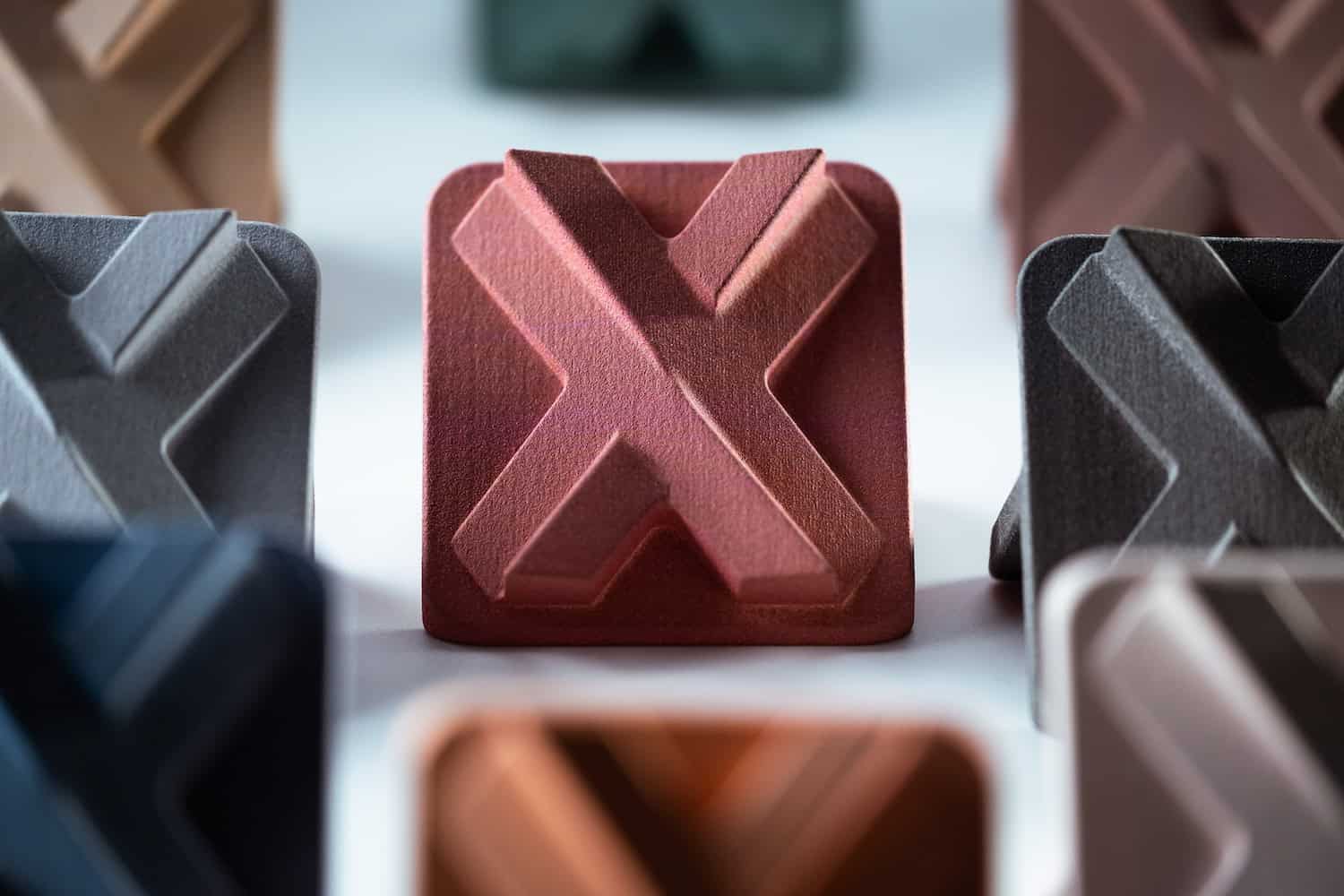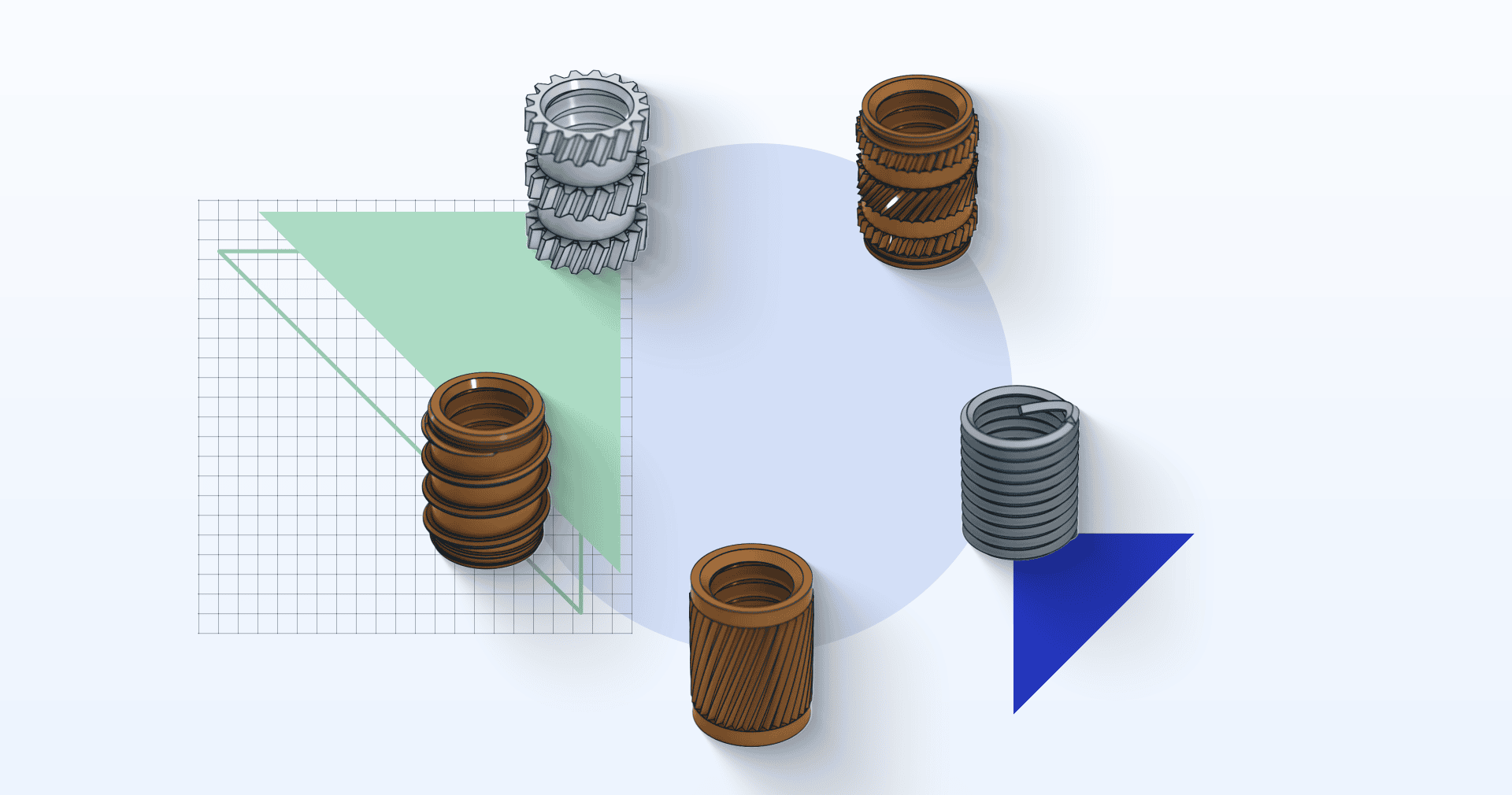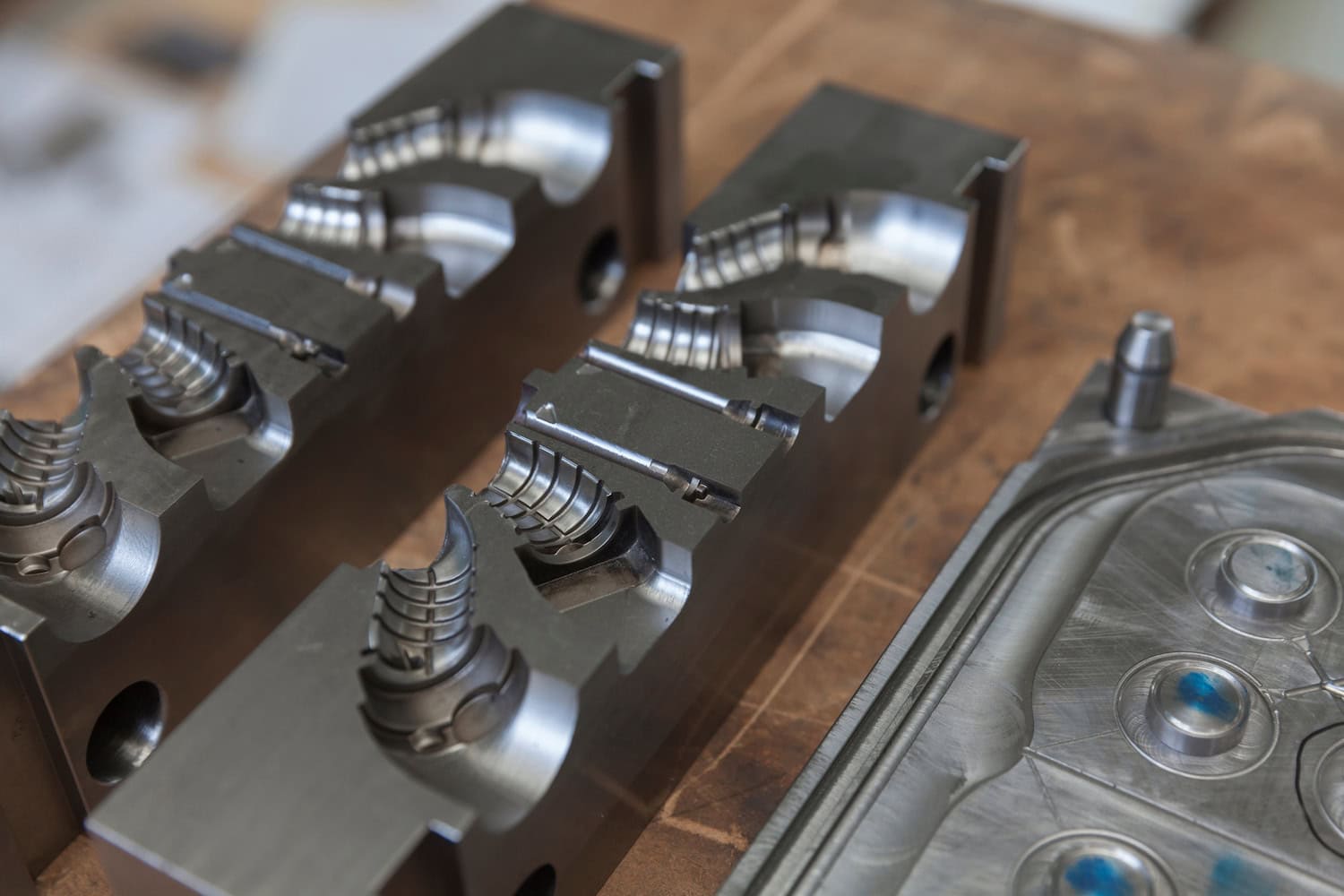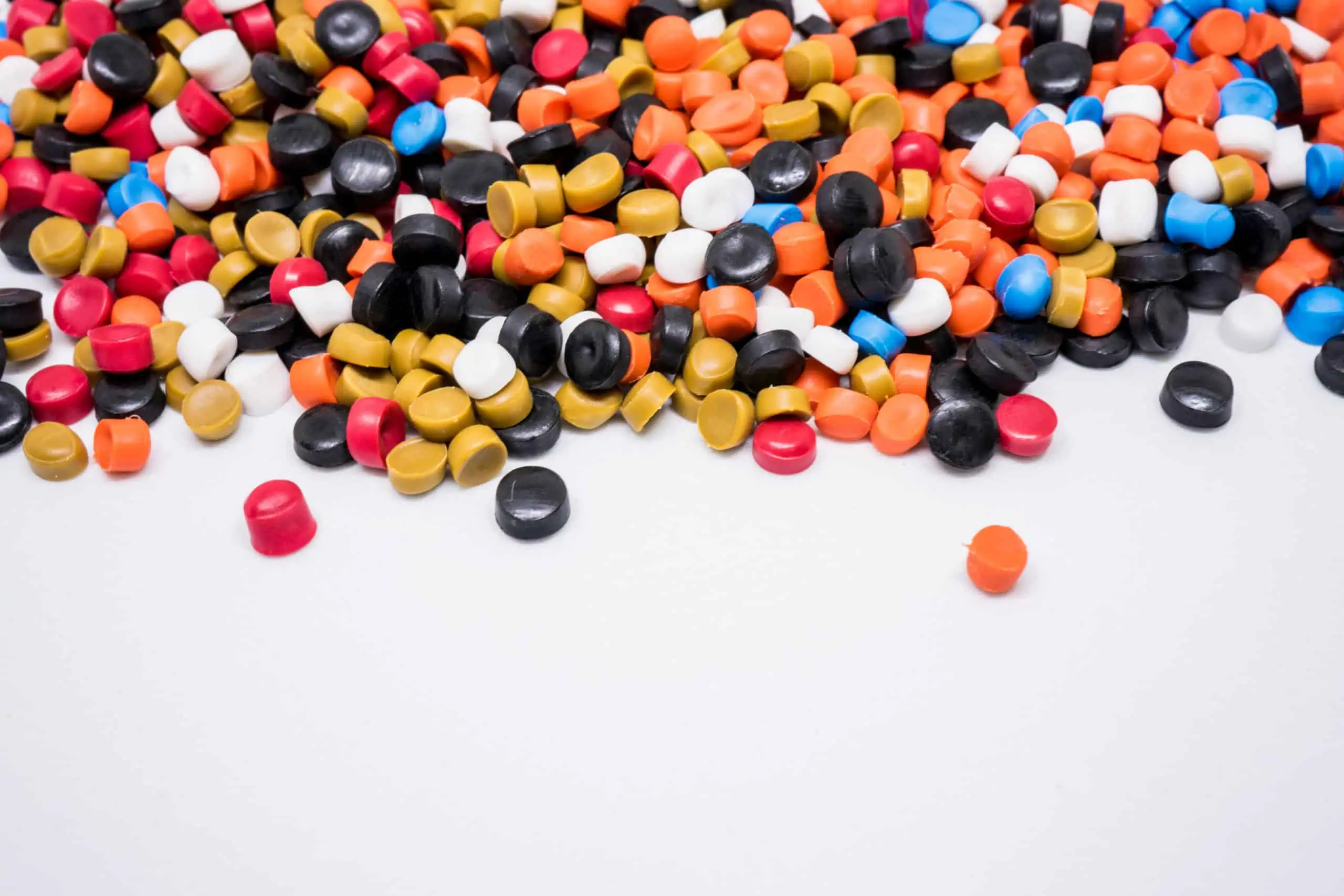When designing products that need to stand up to the sun’s relentless UV rays, choosing the right materials can feel like navigating a maze. From agricultural pipes that crack under pressure to faded outdoor furniture, we’ve all seen what UV radiation can do. But don’t worry—this guide is here to simplify the science and give you practical tips for keeping your plastics durable and long-lasting. Whether you’re an engineer or manufacturer, mastering UV resistance can save your projects from an early demise.
Ultraviolet (UV) radiation can significantly degrade plastics, compromising both their appearance and structural integrity. At the molecular level, UV rays break down the chemical bonds in plastics, leading to discolouration, brittleness, and surface chalking. For instance, Xometry conducted an experiment where a white stereolithography (SLA) part was exposed outdoors for six months resulting in the part becoming yellowed and extremely brittle.
UV-resistant plastics are engineered to withstand such degradation, maintaining their properties under prolonged UV exposure. Common testing standards for assessing UV resistance include ASTM G154, which utilises fluorescent UV lamps, and ISO 4892-2, employing xenon-arc lamps to simulate natural sunlight.
Watch UV-resistant plastics face their ultimate test in Xometry’s ‘Will It Fade’ UV radiation challenge:

Comprehensive UV Material Selection Reference Guide
| Material | Inherent UV Resistance | Common Applications | Degradation Mechanisms | Manufacturing Technologies | Protection Methods | Cost-Effective Alternatives | Testing Requirements | Expected Lifetime | Key Performance Indicators |
| HDPE | Poor | • Agricultural films • Storage containers • Pipes |
• Chain scission • Oxidation • Embrittlement |
• Injection moulding • Extrusion (sheets, pipes, profiles) • Blow moulding |
• 2-3% Carbon black • HALS • Antioxidants |
• PP with UV package • PVC |
• QUV 1000hrs • Xenon 2000hrs |
2-5 years | • Elongation retention • Tensile strength • Brittleness |
| PP | Very Poor | • Outdoor furniture • Automotive parts • Consumer goods |
• Severe chain scission • Chalking • Colour change |
• Injection moulding • Thermoforming • Blow moulding • 3D printing |
• UV absorbers • HALS package • Nucleating agents |
• HDPE • ASA |
• QUV 2000hrs • Xenon 3000hrs |
3-7 years | • Impact resistance • Colour stability • Surface appearance |
| PVC | Moderate | • Window profiles • Siding • Pipes |
• Dehydro-chlorination • Discolouration • Chalking |
• Injection moulding • Extrusion (sheets, pipes, profiles) • Calendering (for sheets and films) |
• TiO2 • Impact modifiers • Heat stabilisers |
• ASA • Engineered composites |
• QUV 4000hrs • Outdoor exposure |
15-25 years | • Colour retention • Impact strength • Dimensional stability |
| PC | Poor-Good | • Glazing • Automotive lenses • Safety shields |
• Yellowing • Surface crazing • Photo-oxidation |
• Injection moulding • Sheet extrusion followed by thermoforming • Profile extrusion • FDM (3D printing) |
• UV protective coating • UV absorbers • Anti-oxidants |
• Acrylic • PMMA |
• Xenon 4000hrs • Outdoor exposure |
10-15 years | • Light transmission • Yellowness index • Impact strength |
| Acrylic (PMMA) | Excellent | • Outdoor signs • Glazing • Lighting |
• Minor yellowing • Surface scratching |
• Injection moulding • Cast sheet production • Extrusion followed by thermoforming |
• UV absorbers • Surface hardeners |
• PC with coating • Modified PET |
• UV-A exposure • Impact testing |
15-20 years | • Optical clarity • Surface hardness • Weather resistance |
| ASA | Excellent | • Outdoor furniture • Automotive trim • Marine parts |
• Minimal colour change • Surface effects (chalking) |
• Calendering • Extrusion • Injection moulding • FDM (3D printing) |
• HALS • Antioxidants |
• ABS with coating • PC/PBT blends |
• QUV 3000hrs • Xenon 4000hrs |
8-12 years | • Colour stability • Gloss retention • Impact resistance |
| PET | Moderate | • Outdoor packaging • Strapping • Textiles |
• Hydrolysis • Chain scission • Crystallisation |
• Injection moulding • Blow moulding (for bottles) • Extrusion followed by thermoforming |
• UV absorbers • Chain extenders |
• PBT • Modified PE |
• Humidity testing • UV exposure |
2-5 years | • Molecular weight • Crystallinity • Mechanical properties |
| Nylon | Poor-Moderate | • Automotive parts • Industrial components |
• Oxidation • Chain breakage • Embrittlement |
• Injection moulding • Extrusion • Cast moulding • 3D printing |
• Carbon black • UV stabilisers • Heat stabilisers |
• PBT • POM |
• Heat ageing • UV + moisture |
5-10 years | • Tensile strength • Chemical resistance • Dimensional stability |
| ABS | Poor without additives | • Temporary outdoor • Painted parts |
• Severe degradation • Butadiene breakdown |
• Thermoforming • Extrusion • Injection moulding • FDM (3D printing) |
• UV stabilisers • Surface coating required |
• ASA • PC/ABS |
• QUV 1000hrs • Coating tests |
1-3 years | • Impact strength • Surface quality • Colour stability |
| POM | Moderate | • Technical parts • Precision components |
• Formaldehyde release • Chain unzipping |
• Injection moulding • Extrusion • Machining (due to good dimensional stability) |
• Thermal stabilisers • Antioxidants |
• Nylon • PBT |
• Thermal stability • UV exposure |
5-8 years | • Dimensional stability • Creep resistance • Stiffness |
| PTFE | Excellent | • UV protection for plastics • Engineering components • Chemical processing |
• Chemical attack | • Lamination • Compression moulding • CNC Machining |
• HDPE for low friction needs | • Thermal stability • UV exposure |
15-25 years | • Dimensional stability • Thermal performance • Chemical resistance |
|
| PVDF | Excellent | • Engineering components • Chemical processing • UV protection for plastics |
• Chemical attack • Discolouration |
• Injection moulding • CNC Machining • Coextrusion |
• PVC for chemical resistance | • Heat ageing | 15-25 years | • Dimensional stability • Thermal performance • Chemical resistance |
|
| PETG | Good | • Outdoor signage • Protective covers • Containers |
• Minor discolouration over time | • Injection moulding • FDM (3D Printing) • Coextrusion |
• PLA with UV additives | • Xenon 3000hrs | 5-10 years | • Tensile strength • Clarity retention |
|
| PLA | Poor | • Prototyping • Consumer products • Packaging |
• Discolouration • Embrittlement • Surface cracking |
• Injection moulding • FDM (3D Printing) • Coextrusion |
• UV stabilisers • Surface coatings |
• PETG • ABS with UV additives |
• Accelerated weathering tests (ASTM G154) | 1-3 years | • Tensile strength • Colour stability |
Understanding UV Light and Its Impact
UV radiation is part of the electromagnetic spectrum with wavelengths between visible light and X-rays, divided into three main types based on wavelength:
| Types of UV Radiation | Wavelength | Description |
| UV-A | 315-400 nm | Longest wavelength, penetrating deeper into materials but with less energy than UVB or UVC. Often leads to gradual surface degradation and discolouration. |
| UV-B | 280-315 nm | Mid-range wavelengths with more energy cause significant surface damage in materials like plastics. Responsible for more intense degradation over time, leading to cracking, fading, and structural breakdown. |
| UV-C | 100-280 nm | The shortest wavelength with the highest energy is often absorbed by Earth’s atmosphere, so it’s less common outdoors. However, it can be emitted by artificial sources like germicidal lamps, leading to rapid material degradation upon direct exposure. |

Natural vs Artificial UV Sources
Natural Sources: The sun is the primary natural source of UV radiation. Although UVC is mostly filtered by the atmosphere, UVA and UVB reach the Earth’s surface and are primary culprits in the degradation of exposed materials.
Artificial Sources: Industrial and medical settings may use artificial UV sources. Black lights, welding arcs, and UV lamps for sterilisation emit UV rays, primarily UVA and UVC, which can accelerate material breakdown in enclosed or high-exposure environments.
3D Printing Materials With UV Resistance
UV-resistant materials aren’t as widely available for 3D printing as they are for traditional methods like injection moulding, but 3D printing brings some exciting advantages. With options like ASA, Polycarbonate, EPDM, and Silicone Rubber, it’s perfect for creating custom, lightweight, and complex UV-resistant parts in small quantities. Whether it’s intricate seals, gaskets, or architectural pieces, 3D printing lets you bring unique designs to life without the high costs of traditional manufacturing.
| Material | Type of material | UV Resistance | Typical Applications | 3D Printing Process |
| Acrylonitrile Butadiene Styrene (ABS) | UV-sensitive plastic | High without additives | Automotive trims, outdoor equipment enclosures | FDM 3D printing |
| Acrylonitrile Styrene Acrylate (ASA) | Inherently UV-resistant plastic | High | Outdoor housings, automotive trims, outdoor furniture | FDM 3D printing |
| Polycarbonate (PC) | Inherently UV-resistant plastic | High with additives | Greenhouse panels, eyewear lenses, outdoor lighting covers | FDM 3D printing |
| Polylactic Acid (PLA) | UV-sensitive plastic | High | Prototyping and low-durability consumer products | FDM (3D printing) |
| EPDM Rubber | Inherently UV-resistant elastomer | Excellent | Weatherstripping, automotive seals, roofing | SLA/DLP 3D Printing |
| Silicone Rubber | Inherently UV-resistant elastomer | Excellent | Seals, gaskets, and medical tubing | SLA/DLP 3D Printing |
Formative Manufacturing Materials With UV Resistance
Formative manufacturing methods, such as injection moulding, extrusion, and blow moulding, offer the widest range of UV-resistant material options, making them the go-to choice for large-scale production.
These processes are ideal for parts like outdoor furniture, automotive components, and chemical piping, where prolonged UV exposure is expected. While traditional methods lack the design freedom of 3D printing, they excel in delivering consistent quality and durability for high-volume applications.
| Material | Type of material | UV Resistance | Typical Applications | Process |
| Acrylonitrile Styrene Acrylate (ASA) | Inherently UV-resistant plastic | High | Outdoor housings, automotive trims, outdoor furniture | Injection moulding |
| High-Density Polyethylene (HDPE) | Inherently UV-resistant plastic | Moderate-High | Piping, playground equipment, outdoor furniture | Extrusion, blow moulding |
| Polycarbonate (PC) | Inherently UV-resistant plastic | High with additives | Greenhouse panels, eyewear lenses, outdoor lighting covers | Injection moulding, extrusion |
| Polyamide-Imide (PAI) | Inherently UV-resistant plastic | Very High | Aerospace parts, high-temperature components | Injection moulding, extrusion |
| Polyvinylidene Fluoride (PVDF) | Inherently UV-resistant plastic | Excellent | Chemical piping, wire insulation, architectural coatings | Injection moulding, extrusion |
| PTFE (Teflon) | Inherently UV-resistant plastic | Excellent | Outdoor electrical insulation, chemical seals, non-stick coatings | Extrusion |
| Polyethylene (PE) | UV-sensitive plastic | High | Packaging, agricultural films, outdoor products | Extrusion, blow moulding, injection moulding |
| Polypropylene (PP) | UV-sensitive plastic | High | Outdoor furniture, automotive parts, containers | Extrusion, injection moulding, thermoforming |
| Polyvinyl Chloride (PVC) | UV-sensitive plastic | Medium-High | Window frames, roofing, outdoor signage | Extrusion, injection moulding |
| Polystyrene (PS) | UV-sensitive plastic | High | Horticultural trays, packaging foam, outdoor containers | Injection moulding, thermoforming, extrusion |
| Acrylonitrile Butadiene Styrene (ABS) | UV-sensitive plastic | High without additives | Automotive trims, outdoor equipment enclosures | Injection moulding, extrusion |
| Polylactic Acid (PLA) | UV-sensitive plastic | High | Prototyping and low-durability consumer products | Injection moulding |
| Butyl Rubber | Inherently UV-resistant elastomer | Excellent | Roofing membranes, pond liners, tyre inner tubes | Extrusion, moulding |
| EPDM Rubber | Inherently UV-resistant elastomer | Excellent | Weatherstripping, automotive seals, roofing | Extrusion, moulding |
| Natural Rubber | UV-sensitive elastomer | Poor / Fair | Tyres, industrial gloves, vibration dampening | Moulding, extrusion |
| Neoprene Rubber | UV-sensitive elastomer | Good | Outdoor hoses, gaskets, wetsuits | Moulding, extrusion |
| Nitrile Rubber | UV-sensitive elastomer | Fair | Fuel hoses, gaskets, oil-resistant seals | Moulding, extrusion |
| Silicone Rubber | Inherently UV-resistant elastomer | Excellent | Seals, medical tubing, outdoor enclosures | Injection moulding, extrusion |
| Styrene Butadiene Rubber (SBR) | UV-sensitive elastomer | Poor / Fair | Tyres, footwear, conveyor belts | Moulding, extrusion |
| Viton Rubber | Inherently UV-resistant elastomer | Excellent | Chemical-resistant seals, automotive O-rings | Moulding, extrusion |

CNC Machining Materials With UV Resistance
CNC machining offers a large selection of UV-resistant materials, making it a preferred choice for high-performance applications. Unlike other processes, CNC allows for tight tolerances and complex geometries in materials like Polycarbonate, PTFE, and UV-stable elastomers. This makes it ideal for producing durable components such as chemical seals, high-performance insulators, and automotive trims that endure harsh UV exposure.
| Material | Type of material | UV Resistance | Typical Applications |
| Acrylonitrile Styrene Acrylate (ASA) | Inherently UV-resistant plastic | High | Outdoor housings, automotive trims, outdoor furniture |
| High-Density Polyethylene (HDPE) | Inherently UV-resistant plastic | Moderate-High | Piping, containers, playground equipment |
| Polycarbonate (PC) | Inherently UV-resistant plastic | High with additives | Greenhouse panels, eyewear lenses, outdoor lighting covers |
| Polyamide-Imide (PAI) | Inherently UV-resistant plastic | Very High | Aerospace components, high-performance insulators |
| Polyvinylidene Fluoride (PVDF) | Inherently UV-resistant plastic | Excellent | Chemical piping, wire insulation, architectural coatings |
| PTFE (Teflon) | Inherently UV-resistant plastic | Excellent | Outdoor electrical insulation, chemical seals, non-stick coatings |
| Polyethylene (PE) | UV-sensitive plastic | High | Packaging, agricultural films, outdoor products |
| Polypropylene (PP) | UV-sensitive plastic | High | Outdoor furniture, automotive parts, containers |
| Polyvinyl Chloride (PVC) | UV-sensitive plastic | Medium-High | Window frames, roofing, outdoor signage |
| Polystyrene (PS) | UV-sensitive plastic | High | Horticultural trays, packaging foam, outdoor containers |
| Acrylonitrile Butadiene Styrene (ABS) | UV-sensitive plastic | High without additives | Automotive trims, outdoor equipment enclosures |
| Butyl Rubber | Inherently UV-resistant elastomer | Excellent | Roofing membranes, industrial liners, tire inner tubes |
| EPDM Rubber | Inherently UV-resistant elastomer | Excellent | Weatherstripping, automotive seals, roofing |
| Neoprene Rubber | UV-sensitive elastomer | Good | Outdoor hoses, gaskets, wetsuits |
| Nitrile Rubber | UV-sensitive elastomer | Fair | Fuel hoses, gaskets, oil-resistant seals |
| Silicone Rubber | Inherently UV-resistant elastomer | Excellent | Seals, medical tubing, outdoor enclosures |
Practical Guide to UV Protection for Plastics Parts in Manufacturing: Choose the Right Solution
UV protection for plastic parts produced with 3D printing, CNC machining or injection moulding involves various approaches, including additives, stabilisers, surface coatings, and strategic design techniques. The best method depends on the component’s characteristics, environmental exposure, and performance requirements. Automotive components use PVD or UV-stabilised coatings for aesthetics and weather resistance, whereas construction materials benefit from co-extruded layers or pigmented solutions for durability.
To keep your SLA prints from turning brittle after UV exposure, a great solution is applying a lacquer finish. Not only does it protect the surface from harmful UV rays, but it also enhances durability and gives your parts a polished, professional look. It’s a simple yet effective way to extend the lifespan of your prints while maintaining their quality over time.

Below, we outline common use cases and corresponding solutions to help you choose the right UV-resistant strategy for your plastic parts.
- Is your plastic component thick?
Thick components risk UV penetration into their depth, causing material degradation over time. Use UV absorbers like benzotriazoles or carbon black pigments to block UV effectively. - Does your plastic component have thin walls?
Thin-walled parts are more vulnerable to UV damage due to their smaller cross-section. Apply Hindered Amine Light Stabilisers (HALS) or use co-extrusion technology to enhance durability. - Will your part be exposed to outdoor conditions?
Outdoor applications face constant sunlight and weathering, leading to discolouration and brittleness. Utilise carbon black pigments or traditional UV-resistant coatings with weatherproof properties for long-lasting protection. - Is aesthetic appearance your priority?
Maintaining visual appeal while protecting against UV damage is crucial for decorative parts. Use Physical Vapor Deposition (PVD) for a sleek finish or traditional UV-resistant coatings in clear or pigmented options. - Does your component need to remain clear or transparent?
Clear parts must retain optical clarity while resisting UV degradation. Apply UV-resistant clear coatings or use UV absorbers for transparent polymers to maintain appearance and function. - Will your part endure extreme environmental conditions?
Exposure to harsh climates, high temperatures, or humidity can accelerate UV-related damage. Use HALS or co-extrusion technology to ensure consistent performance. - Does your part need protection beyond UV resistance?
When additional features like scratch, abrasion, or chemical resistance are required, choose multi-functional solutions. Opt for hybrid coatings that combine UV stabilisers with enhanced durability.
Environmental factors such as geographic location, seasonal temperature changes, atmospheric exposure, and mechanical stresses significantly influence the choice of protection methods. Manufacturers must account for these variables to ensure long-lasting performance.

Common Standards for Weathering and UV Testing
manufacturers select UV-stable polymers that meet application requirements by simulating real-world conditions with accelerated aging techniques like xenon-arc and fluorescent UV lamps. These tests provide critical insights, such as identifying materials prone to failure under real-world conditions, predicting service life in specific locations, and supporting cost-benefit analyses for UV protection strategies. By adhering to standardised methods, manufacturers can ensure reliable performance, backed by verifiable data for warranty and performance claims.
- ASTM G154: Standard practice for operating fluorescent ultraviolet (UV) lamp apparatus for exposure of non-metallic materials.
- ASTM G155: Standard practice for operating Xenon arc lamp apparatus for exposure of materials.
- ASTM D2565: Standard Practice for Xenon-Arc Exposure of Plastics Intended for Outdoor Applications.
- ASTM D4459: Standard Practice for Xenon-Arc Exposure of Plastics Intended for Indoor Applications.
- ASTM D4329: Standard Practice for Fluorescent Ultraviolet (UV) Lamp Apparatus Exposure of Plastics.
- BS EN ISO 4892-2: Plastics. Methods of exposure to laboratory light sources. Part 2 – Xenon-arc lamps.
- BS EN ISO 4892-3: Plastics. Methods of exposure to laboratory light sources. Part 3 – Fluorescent UV lamps.
- BS ISO 4665: Rubber, vulcanised or thermoplastic. Resistance to weathering.
- SAE J2527: Automotive specific.
Key UV Testing Parameters
Testing parameters are calibrated to reflect real-world conditions, providing valuable insights into material performance and lifespan:
- UV Intensity: Adjusted based on geographic UV radiation levels to ensure materials can withstand local conditions, especially in regions with high UV exposure.
- Temperature: Higher temperatures can accelerate the breakdown of many rigid and flexible polymers, making temperature control crucial.
- Humidity Cycles: Alternating wet and dry cycles replicate natural weather patterns, assessing materials’ resistance to combined UV and moisture stresses.
- Exposure Timing: Light and dark cycles simulate the day-night transition, revealing whether materials recover between exposures or undergo cumulative degradation.
- Sample Orientation and Rotation: Rotating samples ensures consistent exposure to UV lights, as varying angles impact wear rates.
Final Considerations for UV Resistant Plastics
When it comes to outdoor applications, UV resistance isn’t just a nice-to-have—it’s a crucial part of the design process. But balancing cost with performance can be tricky. If you’re weighing options, focus on what your project really needs. Do you need something that’ll last decades in harsh conditions, or is a short-term solution enough?
Whether your project involves 3D printing, injection moulding, or CNC machining, explore the Xometry Instant Quoting Engine® and our 3D Printing Wizard to find the right material for an application requiring varying levels of UV exposure.
 Europe
Europe  Türkiye
Türkiye  United Kingdom
United Kingdom  Global
Global 

 Login with my Xometry account
Login with my Xometry account  0
0










Comment(0)